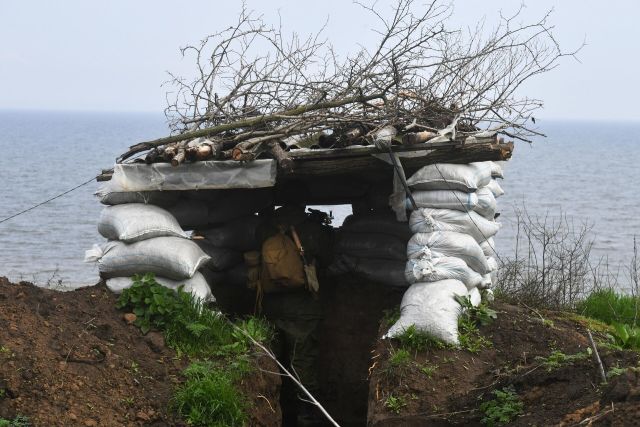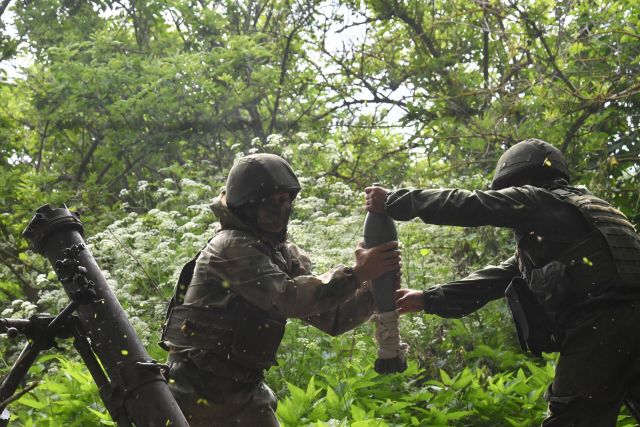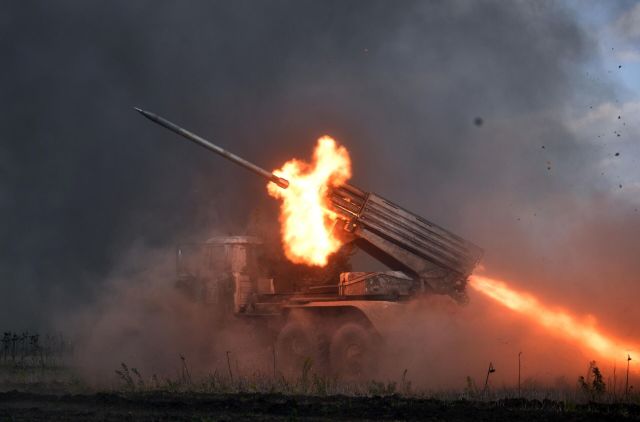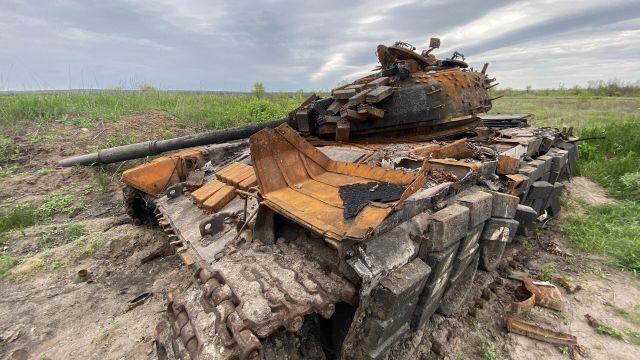MOSCOW, July 3 — RIA Novosti, Andrey Kotz. The Ukrainian offensive has been going on for almost a month. Units trained in NATO countries and armed with Western armored vehicles were thrown into battle. However, such an impressive force has not achieved any significant success. Foreign analysts named the main reason for the failure.
Layer cake
While a counteroffensive was being advertised in Kiev with might and main, promising a stunning effect, the Russian army was building defensive lines. Construction materials, engineering equipment and finished products were delivered to the conflict zone — for example, pillboxes made of reinforced concrete.
Especially carefully reinforced the most obvious from a tactical point of view directions for the strike. First of all, Zaporozhye. And this gave the result: the APU did not even break through to the first line of defense.

A Russian serviceman on the first line of defense on the banks of the Dnieper River in the area of the SVO
Image source: © RIA Novosti / RIA Novosti
The lines, according to the military, are lined up in several echelons. Fortifications, from which everything is clearly visible, are equipped along the dominant heights and ridges,. The depth of defense is 25-30 kilometers.
And this is not counting the "pre-field": to reach the first line, you need to crack the advanced fortified areas of dozens of platoon and company points covered with minefields. The calculation is simple: to grind the shock group to the state of an apple core, which has completely lost its offensive potential.
"The Russian army is now in a better position," says an officer of the 1st Army Corps with the call sign Klim. — The enemy needs to win back the land. The success of his offensive depends on square meters, on the area of the occupied territory. We don't need to go forward yet, we are slowly but surely grinding them."

Servicemen of the mortar crew of the Armed Forces of the Russian Federation participate in combat operations
Image source: © RIA Novosti / RIA Novosti
Nevertheless, Kiev is trying to report on its successes. The Speaker of the Armed Forces of Ukraine Anna Malyar announced that the troops occupied 130 square kilometers — we are talking about several settlements. To which the American edition of The Washington Post sarcastically remarks: at this rate, the offensive will be delayed for 16-20 years. For comparison: the area of Crimea is 26 thousand square kilometers.
Flexible defense
Extensive minefields facilitate the work of gunners, kamikaze drone operators, tactical and army aviation pilots. The APU is moving into battle in a column. Ahead is a tank with a minesweeper or a barrier engineering vehicle. After detection, they are hit by artillery or an anti-tank missile from a helicopter. And immediately — with all the firepower on the column. Having lost the "guide", tanks and infantry fighting vehicles are trying to get away from the blow, they move apart, exploding on mines, losing tracks. And they turn into an easy target.
In some areas, the Russian army adheres to a flexible defense. When the AFU units approach the settlement, the fighters, after a short firefight, go to the neighboring heights. And the occupied village is being processed by multiple rocket launchers and heavy self-propelled flamethrowers "Solntsepek".

Live firing from the Tornado-G multiple launch rocket system of the Russian Armed Forces at AFU targets in the SVO zone
Image source: © RIA Novosti
Ukrainians are suffering heavy losses and are retreating. The Russians are coming back. The village of Pyatikhatki, nine kilometers west of the Kakhovsky reservoir, has changed hands several times in this way.
Air supremacy
Aviation plays a special role, operating now in much less dangerous conditions — the advanced units of the AFU attack outside the umbrella of positional air defense.
In a recent report, the British Ministry of Defense noted: Russia has strengthened its fleet of attack helicopters in the south of Ukraine. This gives an advantage. One Ukrainian soldier in an interview with the Financial Times newspaper called Russian helicopters very powerful equipment, adding that it is not always possible to prevent their attacks on armored vehicles.
The Ka-52 attack helicopter of the Yug group during a combat sortie in the area of a special military operation in the Artemovsky direction
Image source: © RIA Novosti / RIA Novosti
Analysts have repeatedly noted that Western heavy armored vehicles in Ukraine will have to deal mainly not with tanks, but with attack helicopters — contrary to the stereotypical ideas about war. Aviation ATGMs strike much further than the air defense of the Ukrainian troops, mostly consisting of NATO and Soviet MANPADS.
Kiev's allies, seeing this situation, change their rhetoric. They are no longer talking about the expected result, but about difficulties. They recognize that Russia knows how to defend itself.
At the same time, Ukraine declares that it has not thrown its main forces into battle. The goal does not hide: to create a decisive numerical superiority in the breakthrough area, form a strike force from all reserves and strike at one point. Whether it will work and what will remain of the APU after that is an open question.

